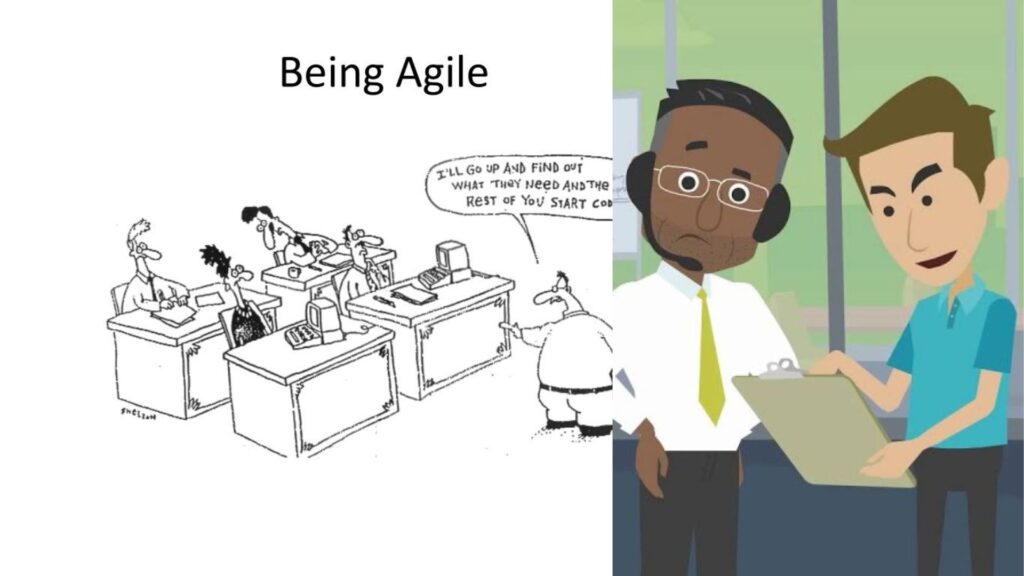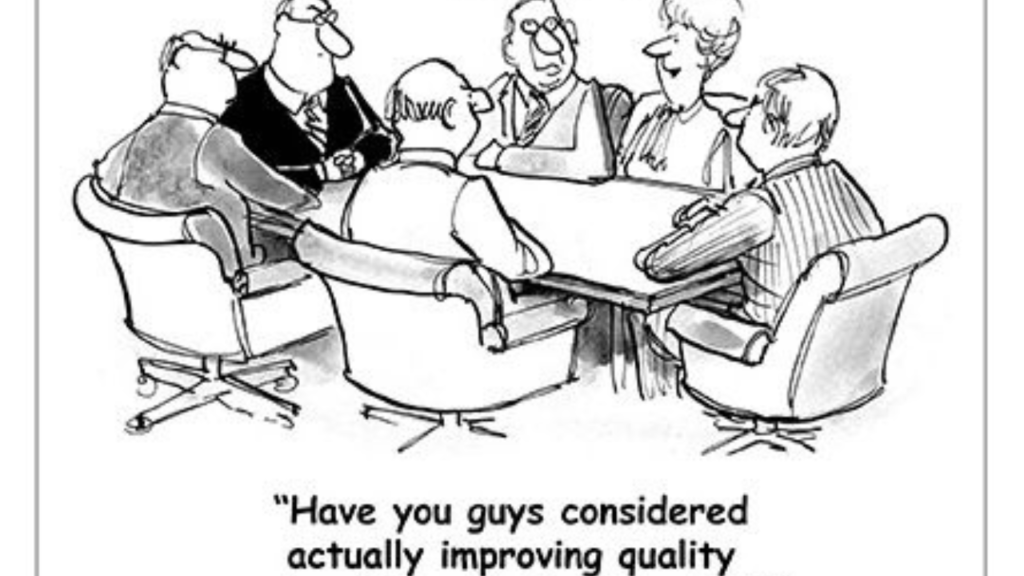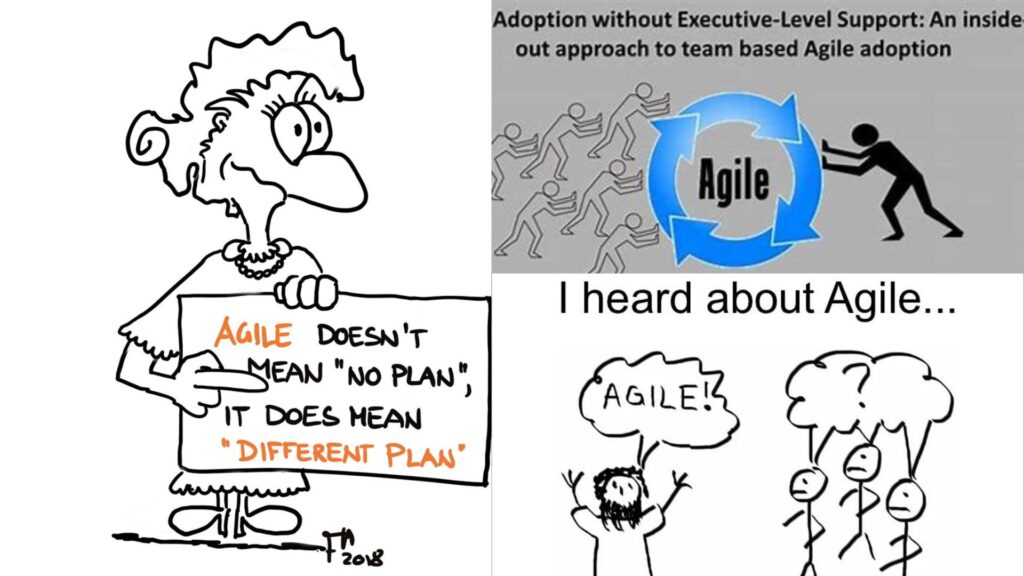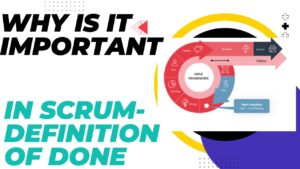Basic Level Agile Interview Questions and Answers
Agile methodology, a customer-focused and iterative approach to project management, has gained widespread recognition for its ability to foster collaboration and adaptability. When asked, “What is Agile methodology?” in an interview, a strong response would emphasize Agile’s core values: valuing individuals and interactions over processes and tools, focusing on working software rather than extensive documentation, prioritizing customer collaboration over contract negotiations, and embracing change as an opportunity for improvement. This approach is particularly useful when dealing with rapidly evolving requirements or industries where customer needs shift frequently. For example, in a software development project, Agile could lead to the incremental delivery of features, allowing developers to incorporate user feedback and make adjustments as needed.
Another common interview question might inquire about the role of a Scrum Master. A well-crafted answer would highlight the Scrum Master’s responsibilities in facilitating the Scrum framework, ensuring the team adheres to Agile principles, and removing any obstacles that impede progress. Drawing from a real-world scenario, one could explain how a Scrum Master supports a development team by organizing daily standup meetings, ensuring clear communication, and helping the team self-organize to deliver high-quality increments of a product. This demonstrates the Scrum Master’s vital role in maintaining the Agile workflow and promoting a collaborative environment for effective project execution.

1. What is the primary goal of Agile methodology?
- Answer: The primary goal of Agile methodology is to deliver valuable increments of a product in a collaborative and adaptive manner. It aims to enhance customer satisfaction by responding to changing requirements, promoting frequent feedback, and fostering a culture of continuous improvement.
2. How does Agile promote transparency?
- Answer: Agile promotes transparency through practices like daily standups and sprint reviews, where team members discuss progress, challenges, and completed work. For instance, during a daily standup, team members share their updates, ensuring everyone is aware of ongoing tasks and potential roadblocks.
3. What is the role of a Scrum Master?
- Answer: A Scrum Master facilitates the Scrum process, removes obstacles, and ensures the development team follows Agile practices. They act as coaches, promoting collaboration and helping the team achieve optimal productivity. An example is resolving conflicts during a sprint to maintain a smooth workflow.
4. Define the concept of “sprint planning.”
- Answer: Sprint planning involves defining the scope of work for an upcoming sprint. The team selects user stories from the product backlog, estimates their effort, and decides how much work can be completed. For example, the team may plan a two-week sprint with specific user stories and allocate tasks accordingly.
5. How does Agile handle evolving requirements?
- Answer: Agile embraces changing requirements by allowing adjustments in each sprint. As an illustration, if new user needs emerge during development, they can be prioritized and added to the backlog, ensuring the product remains aligned with customer expectations.
6. What is the significance of a retrospective meeting?
- Answer: A retrospective is a crucial Agile ceremony where the team reflects on the sprint’s outcomes and processes. By identifying what went well and areas for improvement, the team enhances its practices. For instance, a team might discuss ways to streamline their testing process.
7. Explain the concept of “velocity” in Agile.
- Answer: Velocity measures the amount of work a team completes in a sprint, aiding future planning. It reflects the team’s capacity to deliver value and assists in estimating how much work can be taken on in upcoming sprints. An example is a team consistently completing 20 story points per sprint.
8. How does the Product Owner contribute to Agile success?
- Answer: The Product Owner represents the customer’s needs and priorities, ensuring the development team delivers value. By maintaining a well-prioritized backlog, they guide the team towards creating features that align with business goals. For instance, a Product Owner might adjust priorities based on market feedback.
9. What are the key components of a User Story?
- Answer: A User Story includes a role, action, and benefit, following the format “As a [role], I want to [action] so that [benefit].” For example, “As a user, I want to log in with my email and password so that I can access my account securely.”
10. How does Agile foster a collaborative environment?
- Answer: Agile promotes collaboration through regular ceremonies like sprint planning, standups, and reviews, enabling team members to share updates and work together. Cross-functional teams also enhance collaboration, as members with diverse skills collaborate on various aspects of the product.
11. Describe the purpose of a “Definition of Done.”
- Answer: The Definition of Done outlines the criteria a user story must meet to be considered complete. It ensures consistent quality and aligns the team’s understanding of a “finished” increment. For instance, the Definition of Done might include code review, testing, and documentation.
12. What is the Agile concept of “self-organizing teams”?
- Answer: Self-organizing teams are empowered to make decisions and manage their work. They collectively determine how to best achieve sprint goals, fostering ownership and accountability. An example is a development team selecting tasks based on their expertise and availability.
13. How can Agile principles be applied outside software development?
- Answer: Agile principles can enhance various industries. For instance, in marketing, Agile enables rapid campaign adjustments based on analytics. Similarly, healthcare teams can use Agile to iterate and improve patient care processes based on feedback.
14. Explain the concept of “emergent architecture.”
- Answer: Emergent architecture is an Agile approach where the architecture evolves over time as the product develops. It avoids extensive upfront design, allowing the architecture to adapt based on changing requirements and user needs.
15. What is the purpose of a “Daily Standup” meeting?
- Answer: The Daily Standup is a short daily meeting where team members discuss progress, plans, and impediments. It promotes transparency, helps identify and address obstacles, and ensures everyone is aligned toward the sprint goal.
16. How does Agile manage risks effectively?
- Answer: Agile manages risks through incremental development and regular feedback. By delivering functional increments, risks are identified and addressed early, reducing the likelihood of major project setbacks.
17. What distinguishes Agile from traditional Waterfall methodologies?
- Answer: Agile is iterative, adaptable, and customer-centric, allowing for flexible changes. In contrast, Waterfall is sequential and rigid, requiring complete planning upfront. Agile focuses on delivering value incrementally, while Waterfall often results in a single, large release.
18. What is the significance of “user acceptance testing” (UAT) in Agile?
- Answer: User acceptance testing ensures the product meets user expectations before release. It involves end-users testing the product to validate its functionality and provide feedback. UAT aligns with Agile’s emphasis on customer satisfaction.
19. How does Agile address technical debt?
- Answer: Agile addresses technical debt by allocating time in sprints for refactoring and improvements. Teams can proactively address technical challenges, preventing the accumulation of significant debt over time.
20. Describe the “spike” concept in Agile.
- Answer: A spike is a time-boxed research or investigation task aimed at resolving uncertainty or exploring a solution. For example, a team might use a spike to determine the best approach to integrating a new technology.

21. How does Agile handle conflicting priorities within a sprint?
- Answer: Agile handles conflicts by involving the Product Owner in decision-making. The team collaborates with the Product Owner to reprioritize or adjust the sprint backlog based on the changing circumstances.
22. Explain the concept of “continuous integration” in Agile.
- Answer: Continuous integration involves frequently merging code changes into a shared repository. Automated tests ensure that integration issues are identified early, promoting stable and consistent development.
23. How can Agile contribute to improved customer engagement?
- Answer: Agile involves customers throughout development, gathering feedback and incorporating it into the product. This active engagement ensures the final product aligns with customer expectations and leads to higher satisfaction.
24. What is the purpose of a “Sprint Retrospective”?
- Answer: A Sprint Retrospective is a reflective meeting where the team discusses what went well and areas for improvement. It drives continuous enhancement of processes, productivity, and collaboration.
25. How does Agile support delivering a Minimum Viable Product (MVP)?
- Answer: Agile focuses on delivering valuable increments. By prioritizing and delivering essential features early, an MVP can be released sooner, allowing for rapid user feedback and iterative improvement.
26. Describe the Agile concept of “time-boxing.”
- Answer: Time-boxing involves setting fixed time frames for tasks or activities. For instance, sprints are time-boxed iterations, ensuring a regular cadence of development and facilitating planning.
27. How does Agile cater to remote or distributed teams?
- Answer: Agile employs tools and practices like video conferencing, virtual standups, and collaborative platforms to maintain communication and coordination among remote team members.
28. What is “backlog grooming” in Agile?
- Answer: Backlog grooming involves refining and prioritizing items in the product backlog. It ensures user stories are well-defined, estimated, and ready for upcoming sprints.
29. How does Agile handle unforeseen changes during a sprint?
- Answer: Agile accommodates changes through its adaptive nature. If new requirements emerge, they can be discussed with the Product Owner and incorporated into the current or upcoming sprints.
30. What is the role of the Development Team in Agile?
- Answer: The Development Team is responsible for delivering increments of the product. They collaborate, design, code, and test user stories. A well-functioning Development Team drives project success by collectively delivering value.
Intermediate Level Agile Interview Questions and Answers
In an intermediate-level Agile interview, expect questions that delve deeper into Agile practices and their application. For instance, when asked about the difference between Agile and Waterfall methodologies, your response should emphasize Agile’s iterative nature and its adaptability to changing requirements. You might illustrate this with an example from a software development project, highlighting how Agile’s incremental approach would enable the team to respond swiftly to user feedback and incorporate improvements throughout the development process.
A more in-depth question could focus on the role of a Product Owner in Agile projects. Your answer should showcase the Product Owner’s responsibility for prioritizing and communicating user needs to the development team. Drawing from experience, you could explain how a Product Owner interacts with stakeholders and how they ensure that the product backlog remains aligned with business goals. By providing a clear example, such as a Product Owner prioritizing features for an e-commerce platform based on market trends and customer feedback, you demonstrate your understanding of their pivotal role in driving project success.
Another potential question could revolve around Agile’s impact beyond software development. To address this, discuss how Agile principles can be applied in fields such as marketing or healthcare. Offer insights into how an Agile approach can enhance collaboration, adaptability, and customer satisfaction. For instance, explain how an Agile marketing team might use short iterations to adjust campaign strategies based on real-time performance data, ensuring optimal outcomes in a rapidly changing market landscape. This response underscores your ability to recognize the versatility and broader applicability of Agile methodologies.
Overall, an intermediate-level Agile interview will test your ability to provide nuanced responses that showcase your practical understanding of Agile principles and their real-world application.

31. What is the Agile approach, and why is it beneficial?
- Answer: The Agile approach is a flexible project management method that promotes collaboration, adaptability, and customer satisfaction. It allows teams to respond to changing requirements and deliver increments of value. For instance, a software development team may use Agile to create a mobile app, releasing core features in sprints and iterating based on user feedback.
32. How does Agile differ from traditional Waterfall methodology?
- Answer: Unlike Waterfall, Agile follows an iterative approach with frequent releases and continuous customer involvement. For example, in Waterfall, all requirements are gathered at the beginning and executed sequentially, while Agile adapts to evolving needs through shorter cycles.
33. Explain the concept of User Stories in Agile.
- Answer: User Stories are short, user-centric descriptions of features, often following the format “As a [user], I want to [do something] so that [benefit].” An example could be, “As a shopper, I want to view product reviews so that I can make informed purchasing decisions.”
34. What is the role of a Scrum Master?
- Answer: The Scrum Master facilitates the Scrum process, guides the team, and ensures that Agile principles are followed. They remove obstacles and promote continuous improvement. For instance, a Scrum Master might organize daily standups to foster team communication.
35. How does the Product Owner contribute to Agile projects?
- Answer: The Product Owner represents the customer’s interests, prioritizes user stories, and ensures that the team delivers value. In a marketing project, a Product Owner might prioritize features like SEO improvements based on customer impact.
36. Describe the Scrum framework and its key elements.
- Answer: Scrum involves time-boxed iterations (sprints) with ceremonies like sprint planning, daily standups, sprint reviews, and retrospectives. The development team collaborates to create increments of a product, adhering to the Product Owner’s priorities.
37. What is the purpose of a Sprint Review?
- Answer: A Sprint Review is a meeting at the end of a sprint where the team demonstrates completed work to stakeholders. Feedback is collected, and the product backlog is adjusted accordingly. For instance, a marketing team might showcase new website features to stakeholders.
38. How does Agile handle changing requirements during a project?
- Answer: Agile welcomes change, adapting to evolving requirements through regular feedback and incremental development. For example, if a finance software project adds new tax regulations, the development team adjusts priorities in the next sprint.
39. Explain the concept of “velocity” in Agile.
- Answer: Velocity measures a team’s work completed in a sprint. It helps with future planning and estimating how much work can be done. If a design team consistently completes 20 user stories per sprint, their velocity is 20.
40. What are some common challenges in Agile adoption?
- Answer: Challenges include resistance to change, unclear communication, and difficulties in maintaining focus. For instance, if team members resist daily standups, it can impact collaboration and progress tracking.
41. How does Agile promote teamwork and collaboration?
Answer: Agile encourages cross-functional teams to work together, share skills, and collectively contribute to project success. An example could be a design team collaborating with developers to create a user-friendly interface.
42. What is the Definition of Done (DoD) in Agile? –
Answer: The Definition of Done outlines criteria a user story must meet to be considered complete. It ensures consistent quality and completion standards. For instance, a DoD might include code review and passing tests.
43. How can Agile principles be applied beyond software development?
Answer: Agile principles can benefit various industries, like manufacturing or healthcare, by emphasizing customer needs, adaptability, and continuous improvement. In healthcare, Agile might guide the development of patient-centered applications.
44. Describe the key aspects of effective Agile communication.
Answer: Effective communication includes transparent updates during daily standups, regular feedback, and collaborative problem-solving. For example, a distributed team could use video conferencing for daily standups.
45. What is the role of retrospectives in Agile?
Answer: Retrospectives are meetings at the end of a sprint to reflect on what went well and what can be improved. Teams identify areas for growth and implement changes to enhance future sprints.
46. How does Agile ensure quality in product development?
Answer: Agile ensures quality through continuous testing, regular integration, and adherence to the Definition of Done. A quality assurance team might conduct testing throughout each sprint to catch issues early.
48. How do you handle conflicts within an Agile team?
Answer: Conflicts are addressed openly, fostering a culture of trust and respect. A Scrum Master may facilitate discussions, ensuring that differing viewpoints are heard and resolved for smoother collaboration.
49. What is the role of customer feedback in Agile projects?
Answer: Customer feedback is crucial for adapting and refining the product. In an e-commerce project, feedback on checkout flow might lead to iterative improvements, enhancing user experience.
50. Explain the Agile practice of “Daily Standup” meetings.
Answer: Daily Standups are brief, daily meetings where the team discusses progress, challenges, and plans. It fosters collaboration and keeps everyone aligned. For example, a marketing team might discuss campaign progress and upcoming tasks.
51. How can Agile teams ensure consistent customer involvement?
Answer: Regular demonstrations of work and engaging stakeholders in Sprint Reviews ensure consistent customer feedback. In a web development project, stakeholders can review and suggest changes to prototypes during these reviews.
52. Describe the role of a cross-functional team in Agile.
Answer: A cross-functional team possesses diverse skills needed to complete tasks independently. In a content creation project, such a team might include writers, designers, and SEO experts working together to produce high-quality content.
52. What strategies can enhance Agile team productivity?
Answer: Strategies include setting clear goals, breaking tasks into smaller pieces, and using tools like Kanban boards. In a design project, dividing a complex interface into manageable components can boost productivity.
53. How does Agile address the concept of “Technical Debt”?
Answer: Agile teams prioritize reducing technical debt, which refers to suboptimal code or shortcuts. Regular refactoring and dedicating time to debt reduction ensure a maintainable and efficient product over time.
54. How can Agile principles contribute to project risk management?
Answer: Agile’s iterative approach allows early risk detection and mitigation. Regular assessments of work and adaptable planning can prevent potential issues from escalating. For example, an AI project might identify data integrity risks early on and adjust the strategy accordingly.
55. How does Agile promote continuous improvement?
Answer: Agile encourages retrospectives to reflect on processes and outcomes, identifying areas for enhancement. Continuous improvement ensures that the team refines their practices for better results. A content marketing team might analyze campaign performance in a retrospective and adjust strategies for better engagement.
56. Describe the concept of “Emergent Design” in Agile.
Answer: Emergent Design refers to developing a product incrementally, allowing the design to evolve based on ongoing feedback. In a software project, initial design decisions might change as user needs become clearer during development.
57. What is the role of a Product Backlog in Agile?
Answer: The Product Backlog is a dynamic list of features and user stories, prioritized by the Product Owner. It guides the development team and ensures focus on high-value items. In a travel app, the backlog could include features like booking history and search filters.
58. How does Agile ensure transparency with stakeholders?
Answer: Agile promotes transparency through regular updates, sprint reviews, and clear communication. In a construction project, regular progress reports and walkthroughs keep stakeholders informed about the building’s status.
59. What is the “Five Whys” technique in Agile problem-solving?
Answer: The “Five Whys” involves asking “why” five times to uncover the root cause of a problem. In an e-commerce project, if user engagement drops, the technique might reveal that a confusing checkout process led to lower conversions.
60. How does Agile accommodate remote or distributed teams?
Answer: Agile employs virtual collaboration tools and holds video standups and retrospectives. For instance, a remote design team might use online boards to track tasks and engage in daily discussions via video calls.




Pingback: Agile Interview Success: Expert-Level Agile Dialogues: - Storyteller-PMP Project Management